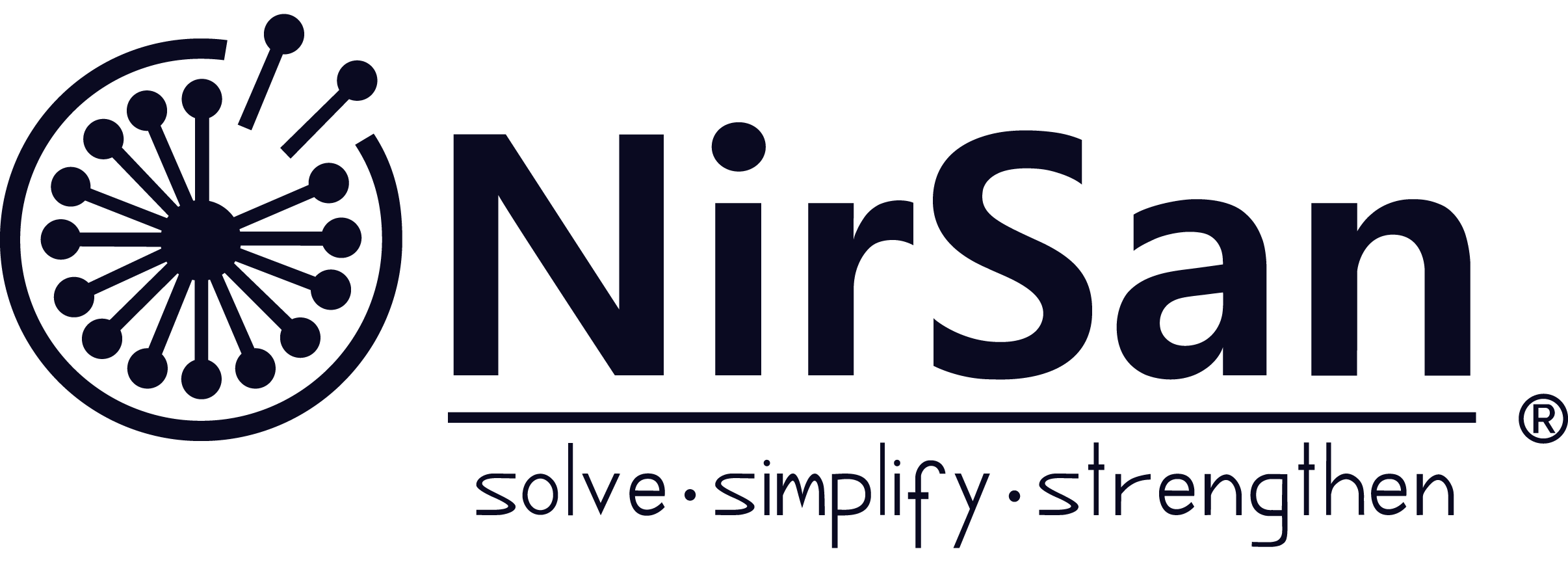
What is QUALEST®?

QUALEST® provides a deep view of the quality standards of hospitality. Service quality is complex in its own right, and turns further complicated in the context of hospitality. QUALEST® is designed based on our proprietary approach of quality measurement in service situations. It is a deep and versatile product which first gets a measure of the customer’s context and wants. QUALEST® provides objective quality assessments through analysis of service behaviour, quality incidents and problem situations. It also provides subjective quality assessments of management and people processes in hospitality. QUALEST® employs a range of data collection techniques and sources including management, employees, customers and incident databases. Finally, it conducts a gap analysis to estimate drivers of lost quality.
QUALEST® provides a deep view of quality standards in hospitality. Service quality is complex, and turns more so in hospitality. Designed based on our proprietary approach of quality measurement in service situations, QUALEST® is a versatile product which gets a measure of the customer’s context and wants, and provides objective assessments through analysis of service behaviour, quality incidents and problem situations. It provides subjective assessments of hospitality processes. QUALEST® uses multiple data sources and techniques for a gap analysis that estimates the drivers of lost quality.
QUALEST® provides a deep view of quality standards in hospitality. Service quality is complex, and turns more so in hospitality. Designed based on our proprietary approach of quality measurement in service situations, QUALEST® is a versatile product which gets a measure of the customer’s context and wants, and provides objective assessments through analysis of service behaviour, quality incidents and problem situations. It provides subjective assessments of hospitality processes. QUALEST® uses multiple data sources and techniques for a gap analysis that estimates the drivers of lost quality.
QUALEST® provides a deep view of quality standards in hospitality. Service quality is complex, and turns more so in hospitality. Designed based on our proprietary approach of quality measurement in service situations, QUALEST® is a versatile product which gets a measure of the customer’s context and wants, and provides objective assessments through analysis of service behaviour, quality incidents and problem situations. It provides subjective assessments of hospitality processes. QUALEST® uses multiple data sources and techniques for a gap analysis that estimates the drivers of lost quality.
Why worry about "quality in hospitality"? Why get QUALEST®?
Service quality is a complex concept given the intangibility, inseparability, heterogeneity and perishability of services. It turns further complicated in hospitality given the difficulty in articulating characteristics of ‘good perceived quality’ and the impairing impact of ‘emotional labour’ on the service provider. QUALEST® cuts through the complexity and gives you a grip on your institution’s service quality. With QUALEST®, you see the link between the context and wants of your customers and the service standards they desire. You enjoy the freedom to assess quality of different facets of your organisation including service behaviour, problem incidences, and business processes. Not in the least, you get clarity on the drivers of lost quality. Get QUALEST® if quality is one of your top three prerogatives for your organisation.
Service quality is a complex concept in its own right given the intangibility, inseparability, heterogeneity and perishability of services. It turns more complicated in hospitality environments given the difficulty in defining ‘good perceived quality’ and the presence of ‘emotional labour’. QUALEST® cuts through this complexity and forges the link between the customers’ context and the service standards they desire. You assess quality of different facets including service behaviour, problem incidences, and business processes, and get clarity on drivers of lost quality. Get QUALEST® if quality is one of your top three prerogatives.
Service quality is a complex concept in its own right given the intangibility, inseparability, heterogeneity and perishability of services. It turns more complicated in hospitality environments given the difficulty in defining ‘good perceived quality’ and the presence of ‘emotional labour’. QUALEST® cuts through this complexity and forges the link between the customers’ context and the service standards they desire. You assess quality of different facets including service behaviour, problem incidences, and business processes, and get clarity on drivers of lost quality. Get QUALEST® if quality is one of your top three prerogatives.
Service quality is a complex concept in its own right given the intangibility, inseparability, heterogeneity and perishability of services. It turns more complicated in hospitality environments given the difficulty in defining ‘good perceived quality’ and the presence of ‘emotional labour’. QUALEST® cuts through this complexity and forges the link between the customers’ context and the service standards they desire. You assess quality of different facets including service behaviour, problem incidences, and business processes, and get clarity on drivers of lost quality. Get QUALEST® if quality is one of your top three prerogatives.

Who will benefit from QUALEST®?

QUALEST® benefits multiple stakeholders. Ultimate beneficiaries are your customers, who enjoy better quality hospitality while dealing with your institution. Immediate beneficiaries are the leadership team, cadre of managers, and frontline employees. Leadership gets valuable inputs on how service quality match up to the expectations of customers. Closing these gaps could be the critical intervention that brings about a rise in customer retention. Managers and supervisors get a grip on what ails service standards of their teams and departments. Frontline employees benefit from a better understanding of their guests and from actionable interventions for raising service quality. Importantly, QUALEST® aligns the organisation on the definition of ‘good perceived quality’ and the ‘sources of lost quality’.
QUALEST® ultimately benefits your customer community, who get to enjoy hospitality of a better quality. Immediate beneficiaries are the leadership team, managers, and frontline employees. Leadership gets inputs on gaps between service quality and customer expectations, and how they might close these gaps for greater customer retention. Managers get a grip on what ails service standards of their teams. Frontline employees get actionable and effective ideas for raising service quality. Importantly, QUALEST® gets the organisation aligned on what constitutes ‘good perceived quality’ and on the ‘sources of lost quality’.
QUALEST® ultimately benefits your customer community, who get to enjoy hospitality of a better quality. Immediate beneficiaries are the leadership team, managers, and frontline employees. Leadership gets inputs on gaps between service quality and customer expectations, and how they might close these gaps for greater customer retention. Managers get a grip on what ails service standards of their teams. Frontline employees get actionable and effective ideas for raising service quality. Importantly, QUALEST® gets the organisation aligned on what constitutes ‘good perceived quality’ and on the ‘sources of lost quality’.
QUALEST® ultimately benefits your customer community, who get to enjoy hospitality of a better quality. Immediate beneficiaries are the leadership team, managers, and frontline employees. Leadership gets inputs on gaps between service quality and customer expectations, and how they might close these gaps for greater customer retention. Managers get a grip on what ails service standards of their teams. Frontline employees get actionable and effective ideas for raising service quality. Importantly, QUALEST® gets the organisation aligned on what constitutes ‘good perceived quality’ and on the ‘sources of lost quality’.
Where (in which settings) should you get QUALEST®?
Get QUALEST® when you sense any of the following six deficiencies in your service model. First is ‘concept deficiency’ – when quality is not well defined, emphasised or measured in the organisation. Second is ‘understanding deficiency’ – when standards desired by customers is not well understood by the hospitality provider. Third is ‘specification deficiency’ – the differences between customer needs, as perceived by the provider, and the standards set. Fourth is ‘execution deficiency’ – differences between standards delivered and standards set. Fifth is ‘communication deficiency’ – when standards committed to customers by marketing are different from the standards delivered. Sixth is ‘relevance deficiency’ – the difference in standards between what customers perceive they receive and what they expect.
Get QUALEST® when you sense any of the following six deficiencies. First, ‘concept deficiency’ – when quality is not well defined, emphasised or measured. Second ‘understanding’ – when standards desired by customers is not understood. Third ‘specification’ – when gap between customer needs, as perceived by the provider, and the standards set. Fourth ‘execution’ – when gap between standards delivered and standards set. Fifth ‘communication’ – when gap between standards committed to customers and those delivered. Sixth is ‘relevance’ – when gap between what customers perceive they receive and what they expect.
Get QUALEST® when you sense any of the following six deficiencies. First, ‘concept deficiency’ – when quality is not well defined, emphasised or measured. Second ‘understanding’ – when standards desired by customers is not understood. Third ‘specification’ – when gap between customer needs, as perceived by the provider, and the standards set. Fourth ‘execution’ – when gap between standards delivered and standards set. Fifth ‘communication’ – when gap between standards committed to customers and those delivered. Sixth is ‘relevance’ – when gap between what customers perceive they receive and what they expect.
Get QUALEST® when you sense any of the following six deficiencies. First, ‘concept deficiency’ – when quality is not well defined, emphasised or measured. Second ‘understanding’ – when standards desired by customers is not understood. Third ‘specification’ – when gap between customer needs, as perceived by the provider, and the standards set. Fourth ‘execution’ – when gap between standards delivered and standards set. Fifth ‘communication’ – when gap between standards committed to customers and those delivered. Sixth is ‘relevance’ – when gap between what customers perceive they receive and what they expect./p>

How does QUALEST® work?

QUALEST® is best used in recurring mode, and is designed for biannual or annual usage. The product can take a variety of forms depending on scope, based on the facets of quality to be assessed, and departments and processes to be covered. The four stages of ‘installation’, ‘engagement’, ‘analysis’ and ‘dissemination’ take place over ten to twelve weeks. At installation, organisation’s leadership decides product scope by selecting from objective and subjective modes, choosing from five facets of behavioural and process quality, and identifying data sources and respondents. QUALEST® then interacts with data sources and respondents, and analyses information based on our quality framework. The final QUALEST® report describes customer context and needs, evaluates quality, and describes sources of quality loss.
QUALEST® is designed for biannual or annual usage. It can be used differently depending on your choice of facets of quality, departments and processes that you want to assess. ‘Installation’, ‘engagement’, ‘analysis’ and ‘dissemination’ take place in ten weeks. To install, you select from objective and subjective modes, choose from five facets of process and behavioural quality, and identify data and respondents. QUALEST® then interacts with respondents, and analyses based on our quality framework. The QUALEST® output outlines customer context and needs, evaluates quality, and describes sources of quality loss.
QUALEST® is designed for biannual or annual usage. It can be used differently depending on your choice of facets of quality, departments and processes that you want to assess. ‘Installation’, ‘engagement’, ‘analysis’ and ‘dissemination’ take place in ten weeks. To install, you select from objective and subjective modes, choose from five facets of process and behavioural quality, and identify data and respondents. QUALEST® then interacts with respondents, and analyses based on our quality framework. The QUALEST® output outlines customer context and needs, evaluates quality, and describes sources of quality loss.
QUALEST® is designed for biannual or annual usage. It can be used differently depending on your choice of facets of quality, departments and processes that you want to assess. ‘Installation’, ‘engagement’, ‘analysis’ and ‘dissemination’ take place in ten weeks. To install, you select from objective and subjective modes, choose from five facets of process and behavioural quality, and identify data and respondents. QUALEST® then interacts with respondents, and analyses based on our quality framework. The QUALEST® output outlines customer context and needs, evaluates quality, and describes sources of quality loss.
When during the financial year should you get QUALEST®?
QUALEST® requires ten to twelve weeks to go through the ‘installing’, ‘engaging’, ‘analysing’ and ‘disseminating’ phases. The underlying criticality of service quality in hospitality implies that there is no optimal period for its usage. QUALEST® does not naturally synchronise with the organisation’s business or financial calendar. Having said that, and if you have the flexibility, then we lightly recommend the following timeframes. If you are using QUALEST® biannually, then we suggest the second and fourth quarters. This allows for interventions in the beginning of the year, and for remedial measures in the middle. When using QUALEST® annually, we suggest to synchronise with your budgeting process. The QUALEST® report could suggest business and organisational interventions with financial and budgetary implications.
QUALEST® has no optimal timing given the underlying criticality of service quality in hospitality. Having said that, and if you have the flexibility, then we lightly recommend the following timeframes. If you are using QUALEST® biannually, then we suggest the second and fourth quarters. This allows for interventions in the beginning of the year, and for remedial measures in the middle. When using QUALEST® annually, we suggest synchronising with the budgeting process. The QUALEST® output will suggest business and organisational interventions with financial and budgetary implications.
QUALEST® has no optimal timing given the underlying criticality of service quality in hospitality. Having said that, and if you have the flexibility, then we lightly recommend the following timeframes. If you are using QUALEST® biannually, then we suggest the second and fourth quarters. This allows for interventions in the beginning of the year, and for remedial measures in the middle. When using QUALEST® annually, we suggest synchronising with the budgeting process. The QUALEST® output will suggest business and organisational interventions with financial and budgetary implications.
QUALEST® has no optimal timing given the underlying criticality of service quality in hospitality. Having said that, and if you have the flexibility, then we lightly recommend the following timeframes. If you are using QUALEST® biannually, then we suggest the second and fourth quarters. This allows for interventions in the beginning of the year, and for remedial measures in the middle. When using QUALEST® annually, we suggest synchronising with the budgeting process. The QUALEST® output will suggest business and organisational interventions with financial and budgetary implications.

© Copyright 2019  All rights reserved.
All rights reserved.
© Copyright 2019  All rights reserved.
All rights reserved.
© Copyright 2019  All rights reserved.
All rights reserved.
© Copyright 2019  All rights reserved.
All rights reserved.
